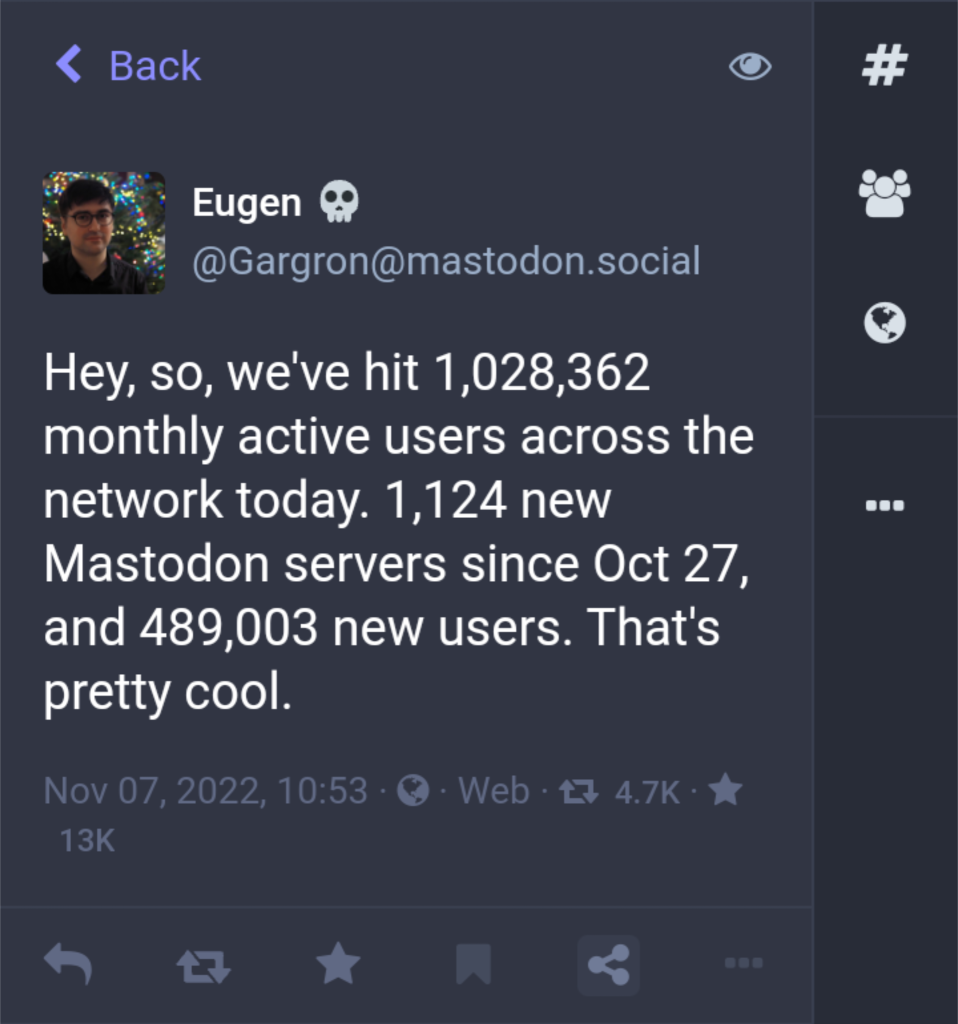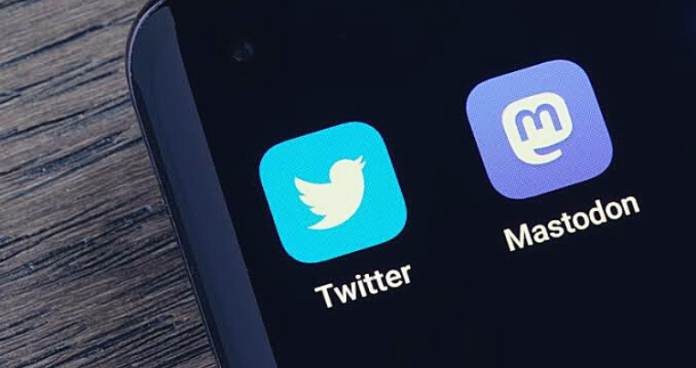Ever since Elon Musk has taken control of Twitter, many users have been flocking to other social media platforms. One such alternative is the German website Mastodon.
An analysis by tracking firm BotSentinel estimated that over 1 million users have left Twitter within 4 days of the new ownership. According to the data, about 877,000 accounts were deactivated and more than 497,000 were suspended between October 27 and November 1. This is three times more than the number of users leaving the bird app before Musk completed his takeover.
On the other hand, the takeover also resulted in increased popularity for Twitter as it got more than 7.5 million downloads from App Store and Play Store between October 27 and November 7. Meanwhile, there’s an uptick in the number of users on other platforms, especially Mastodon.
The open-source decentralized network gained almost half a million users by November 7. It also boosted it’s monthly active users to exceed 1 million. The creator Eugen Rochko announced the development saying it was pretty cool.

What is Mastodon?
Given the rising popularity, many have been wondering about the nature of Mastodon and if its really a Twitter alternative. Despite the fact that it looks and feels like the bird app, there are stark differences between the two.
Rochko founded Mastodon in 2016 with support from crowdfunding and European Commission. It was registered as a non-profit GmbH in 2021. Unlike Twitter, it is completely free and does not contain ads, algorithms, or “verified users”. However, main features are similar to Twitter like posting, following, liking and sharing other’s posts, and hashtags.
The “Tweets” are called “Toots” in Mastodon and can contain up to 500 characters – almost half as much as 280 in Twitter. The platform also supports attaching images and videos to the Toots. Similarly, these messages can be made public or private depending on user’s choice. Moreover, there is also option for adding content warning if the poster does not think it would be appropriate for some audience.
However, before being able to use it, once has to enter Mastadon which might be a novel process for traditional social media users. There is no central space to actually “sign up” like Twitter and Facebook. Mastodon is basically a network of thousands of microblogging servers called “instances”. These self-hosted instances are created and moderated individually by volunteers. They allow multiple social networking sites to loosely connect with each other and work together like a federation. This is why they are called federated servers and collectively they are called “Fediverse”. This model allows the network to be free of corporate control and certainly protect it from a billionaire takeover.
How to Sign Up?
There are nearly 5000 instances which can be based on different interest groups, geographic locations, professional background, or anything else the admin wants. Users can join multiple servers and switch whenever they want while keeping the connections from other servers intact. It mean they will still be able to connect with their friends on the server they choose to leave. One instance is a quiz that helps users select an appropriate server according to thier likes and interests. Each instance has its own terms and conditions for users to accept before joining. The main process is to provide personal information and then wait for confirmation notification in emai for verification. After verification, users will get screen name and will be able to follow, like, and share just like in Twitter.
For optimized experience, some instances require users to submit application form with information about their interests. Each server can have some limitations or filters regarding the content they want or do not want to entertain. It also allows to block or report unwanted behavior of users on any other server to volunteer administration. However, it doesn’t mean that one server owner can have power over other servers. Due the egalitarian system, all servers have the right to exist no matter their content. For example, if one server forbids posting pornographic content, it may be legal or integral on any server. If one community is unhappy with the activity of some instances, they can diplomatically sever ties with it, blocking themselves from viewing their content.
Similarly, some instances can run a fundraiser for covering the server maintenance costs, even though the platform is not for profit. It’s also possible that administrators would stop operating an instance due to loss of interest.
One of the most popular Mastodon servers is mastadon.online, administered by the founder himself. Donald Trump’s Truth Social, which his PR team promoted as his own app, is also one of Mastodon’s instances with a few tweaks to the theme.
The decentralized social networks like Mastodon offer more content control to the users rather than any boss. The “Mastodonians” have the opportunity to chose the kind of independence they want on social media without any central authority. They can resist censorships and have full ownership over their personal data. Experts have opined that such type of social network can also face its own fair share of challenges.
What Challenges Can Mastodon Face?
Despite the growth of traffic on decentralized social media like Mastodon, Twitter still has more than 200 million daily active users. It shows despite its advantages, this system is still short in competing with the social media owned by tech giants. There can be reasons like the “instances” system can be too complicated for a large chunk of population. Almost all internet users are familiarized with the mainstream social media model. It can also be difficult for users to find the right server to join, especially when they have to wait to get a spot.
Mastodon is not the only alternative to tech giants like Twitter. Several other platforms have the same ecosystem where multiple decentralized social networking sites connect. ActivityHub, Happening, and GNU Social are some of the prominent examples. These applications are around for quite some time but are still going through a learning phase. They do not want the same legal problems like the big tech faces over censorship, content moderation, and account takedowns. Besides the users, these apps themselves are researching and developing the decentralization protocol to be the ultimate standard for social networking.
Jack Dorsey’s BlueSky initiative is also intended to allow multiple social networks with thier own rules to connect with other. However, it is highly unlikely for the tech giants to give into such protocols. They would not want to let go of the power they hold over users and their content. One thing is clear that there is a need for a social media ecosystem which focuses on user interests more than making profits. As per current circumstances, it will not be possible unless tech giants work together with decentralized social networks like Mastodon.
Also Read


